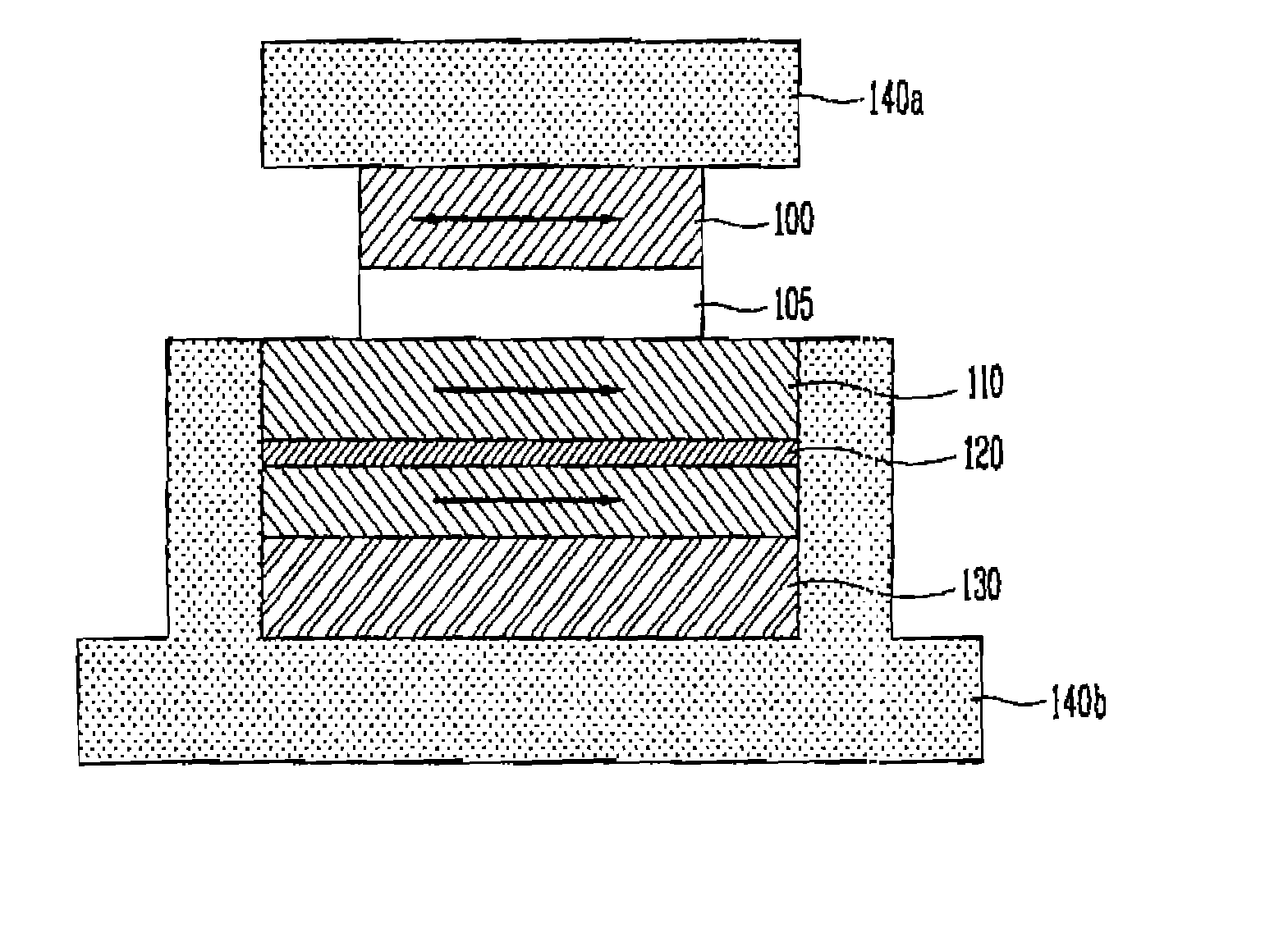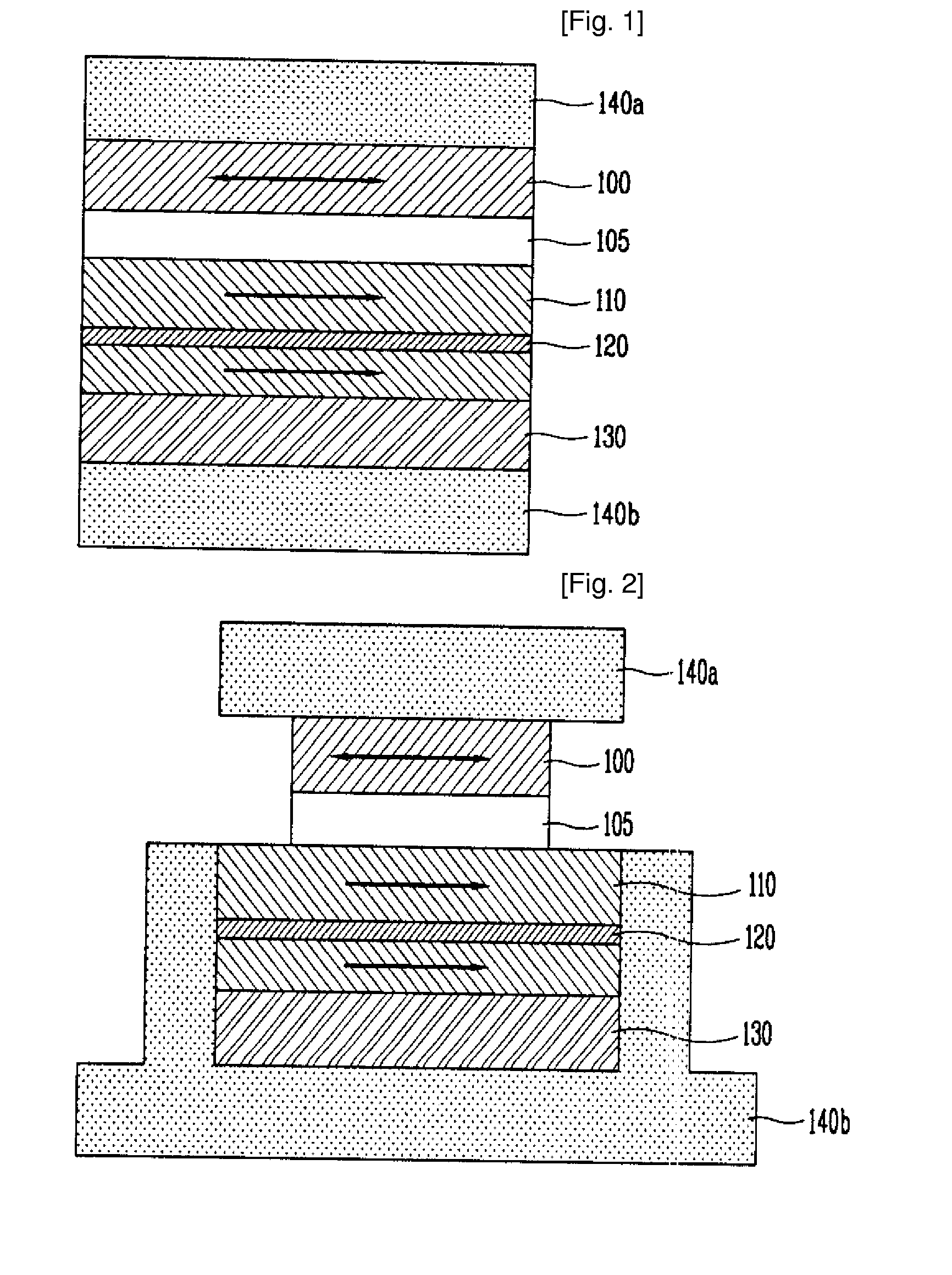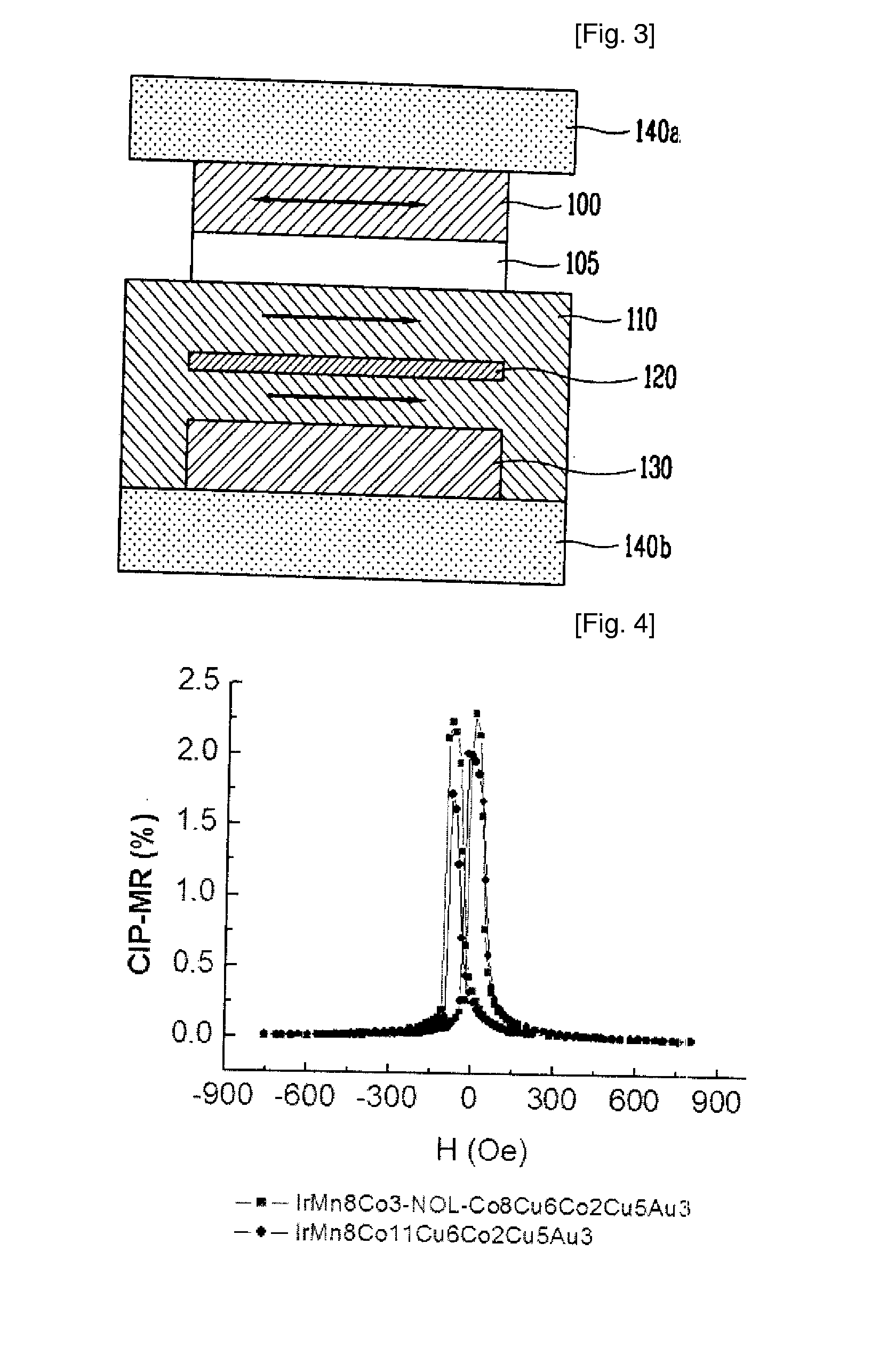Current Induced Magnetoresistance Device
a current-induced magnetoresistance and magnetic memory technology, applied in the field of current-induced magnetoresistance devices, can solve the problems of increasing the current required, the switching field, and the crosstalk between adjacent lines and cells, and the limitation of increasing the density of the magnetic memory devices, so as to improve the integration
- Summary
- Abstract
- Description
- Claims
- Application Information
AI Technical Summary
Benefits of technology
Problems solved by technology
Method used
Image
Examples
example
[0028] After preparing the first ferromagnetic layer and the second ferromagnetic layer using cobalt (Co) thins films of 2 nm and 11 nm in thicknesses respectively, the nonmagnetic layer of copper thin film of 6 nm in thickness to be pinned between the ferromagnetic layers was prepared. After forming the first ferromagnetic layer such that it is thinner than the second ferromagnetic layer, an antiferromagnet was formed using IrMn thin film of 8 nm in thickness through exchange coupling at the lower part of the second ferromagnetic layer. In addition, an oxide layer of less than 5 Å was formed when forming the second ferromagnetic layer. The upper part and the lower part of the laminated structure were formed with copper (Cu) electrode of 5 nm respectively, and the lower part of the electrode was formed such that at least a part of the second ferromagnetic layer is in contact with the electrode.
[0029] In order to compare the magnetoresistance device of the present invention, a devic...
PUM
 Login to View More
Login to View More Abstract
Description
Claims
Application Information
 Login to View More
Login to View More - R&D
- Intellectual Property
- Life Sciences
- Materials
- Tech Scout
- Unparalleled Data Quality
- Higher Quality Content
- 60% Fewer Hallucinations
Browse by: Latest US Patents, China's latest patents, Technical Efficacy Thesaurus, Application Domain, Technology Topic, Popular Technical Reports.
© 2025 PatSnap. All rights reserved.Legal|Privacy policy|Modern Slavery Act Transparency Statement|Sitemap|About US| Contact US: help@patsnap.com



